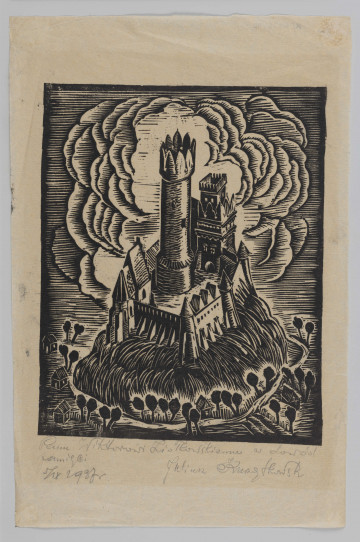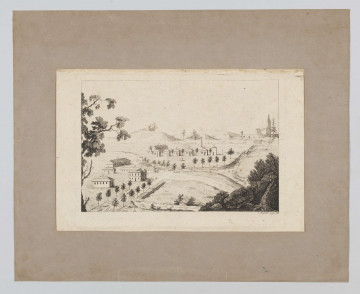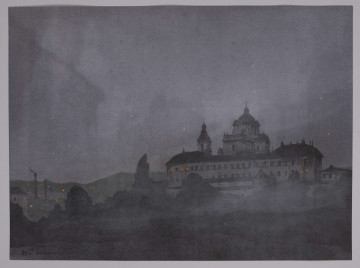
Lublin Castle - an architectural fantasy
National Museum in Lublin
Part of the collection: Lubliniana. Painting views of Lublin and the Lublin Region
The Magistrate, also known as the New Town Hall, as opposed to the Old Town Hall situated on the market square, which was the seat of the Crown Tribunal from 1578 until the partitions of Poland, was built outside the area of the former city, near the Kraków Gate. The idea of building a new seat of the municipal authorities was born during the reign of King Sigismund III Vasa, who in 1611 issued a special permit. Ultimately, the town hall was erected in the years 1827-1828 on the framework of the walls of a Carmelite Church and the adjoining monastery, burnt in 1803. For this purpose, the main nave and the western row of chapels of the temple were adapted, and two wings of the monastery were used: the eastern from Nowa Street (now Lubartowska) and the northern, with preserved monastery cells. The construction works according to the design of Aleksander Groffe, the general builder of the Kingdom of Poland, were supervised by Jakub Hempel – the voivodeship builder. The building housed offices, a ballroom, the City Archives, and jails as well as the Merchant’s Resource Association (until 1863). Important documents and memorabilia related to the history of the city were also kept here. From the nineteenth century, in the so-called municipal treasury there were, among others: the city charter from 1317 and other royal privileges, the oldest plan of Lublin from 1648, portraits of Polish and Lublin dignitaries, executioners’ swords, and a copy of the old city keys.
During World War II, the building was bombed and burned down twice – in 1939 by the Germans, and in 1944 by the Soviets. During an air attack on September 9, 1939, a falling bomb penetrated the ceiling of the second and first floors, killing about 40 people. Jan Gilas, a janitor of the municipality at that time, showed heroism by grabbing one of the bombs that did not explode and carrying it out of the building. Gilas, who suffered a sudden, fatal heart attack due to the emotional shock and died in the street in front of the town hall, is a patron of one of the nearby streets.
The building was rebuilt in the years 1947-1952 according to the design of Ignacy Kędzierski. Above the entrance door and at the top of the tower is a goat – the coat of arms of the city. On the front elevation there are plaques with the names of Lublin’s partner cities. The president’s office exhibits a large panorama of the city, captured from the south, General Zajączek's entrance to Lublin from 1826 by Philipp Dombeck, a priceless source of knowledge about the nineteenth-century architecture and urban planning of the ‘goat’ town.
Renata Bartnik
Author / creator
Dimensions
cały obiekt: height: 34,3 cm, width: 26,6 cm
Object type
graphics
Technique
lithography
Material
paper
Creation time / dating
Creation / finding place
Owner
The National Museum in Lublin
Identification number
Location / status

National Museum in Lublin

National Museum in Lublin

1915
National Museum in Lublin
DISCOVER this TOPIC
Museum of King Jan III's Palace at Wilanów
DISCOVER this PATH
Educational path